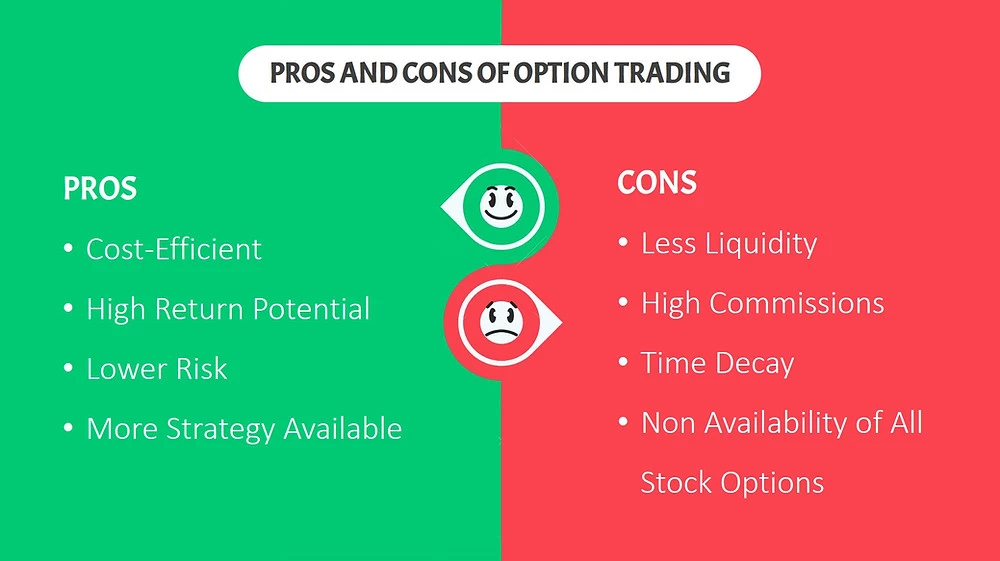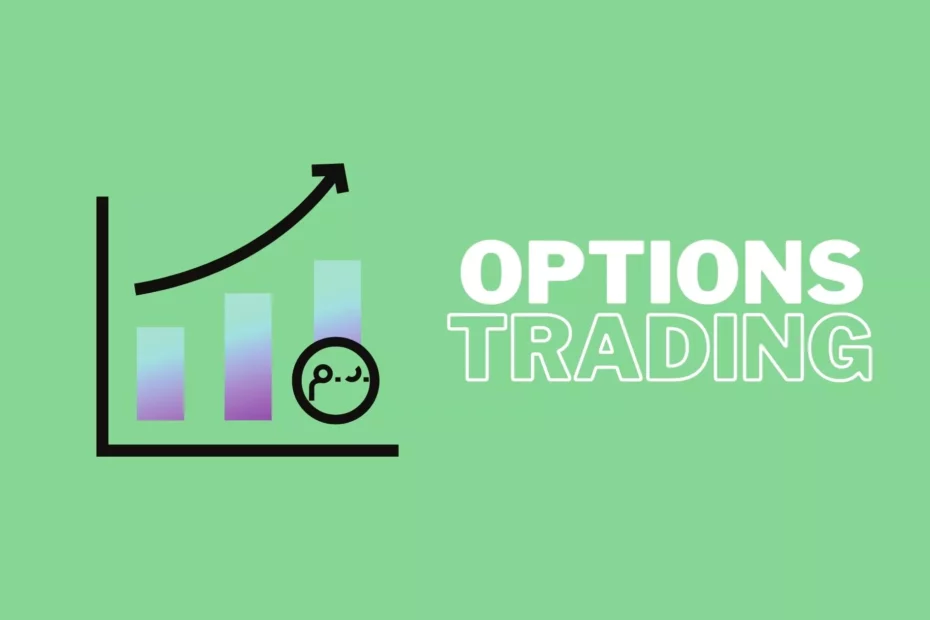Introduction : Option Trading
Option trading is a financial contract that gives the buyer the right, but not the obligation, to buy or sell an underlying asset at a predetermined price (strike price/exercise price) at a specified time in the future. In exchange for granting the option, the seller collects a premium payment from the buyer. Option trading provides a flexible and efficient way for investors to manage their risk and generate income.
Utility of the Exchange-Traded Options
Exchange-traded options are an important class of options that are standardized, trade on public exchanges, and are facilitated for investors. These options provide settlement guaranteed by the clearing corporation, reducing counterparty risk. They can be used for a variety of purposes such as hedging, market direction speculation, arbitrage, and implementing income-generating strategies.
What are Index Options?
Index options are options that have an index as the underlying. In India, the regulators have authorized the European-style of settlement for these options. Examples of such options include Nifty options and Bank Nifty options.
What are Stock Options?
Stock options are options on individual stocks, with the stock as the underlying. The contract gives the holder the right to buy or sell the underlying shares at the specified price. The regulator has authorized the American-style of settlement for these options.
Participants in Option Trading
There are three main participants in option trading:
- Buyer of an Option
- Writer/seller of an Option
- Call Option
- Put Option
Types of Options Trading
- Premium – The price the option buyer pays to the option seller.
- Expiry date – The date specified in the option contract, also known as the exercise date.
- Strike price – The price at which the contract is entered, also known as the exercise price.
- American option – An option that can be exercised at any time until the expiry date.
- European option – An option that can be exercised only on the expiry date.
Profitability Scenario in Options Trading
- In-the-Money Option – An option that results in a positive cash flow for the holder if exercised immediately. For example, in a call option on the index, if the current index value is higher than the strike price (spot price > strike price), the option is considered in-the-money.
- At-the-Money Option – An option that results in zero cash flow (a situation of no profit/no loss) if exercised immediately. For example, in a call option on the index, if the current index value is equal to the strike price (spot price = strike price), the option is considered at-the-money.
- Out-of-the-Money Option – An option that would result in a negative cash flow if exercised immediately. For example, in a call option on the index, if the current index value is lower than the strike price (spot price < strike price), the option is considered out-of-the-money.

Option Trading Strategies
As a trader, you can use options trading to make money in both up and down markets, by buying and selling options. There are many different strategies you can use in option trading, including long call options trading strategy, short call options trading strategy, long put options trading strategy, short put options trading strategy, long straddle options trading strategy and short straddle options trading strategy.
Long Call Options Trading Strategy
The long call options trading strategy is a bullish strategy that is used when a trader thinks that the underlying stock will go up in the future. The trader buys a call option and waits for the underlying stock to rise in price. If the stock rises in price, the trader can sell the call option at a profit.
Short Call Options Trading Strategy
The short call options trading strategy is a bearish strategy that is used when a trader thinks that the underlying stock will go down in the future. The trader sells a call option and waits for the underlying stock to fall in price. If the stock falls in price, the trader can buy the call option back at a lower price and make a profit.
Long Put Options Trading Strategy
The long put options trading strategy is a bearish strategy that is used when a trader thinks that the underlying stock will go down in the future. The trader buys a put option and waits for the underlying stock to fall in price. If the stock falls in price, the trader can sell the put option at a profit.
Short Put Options Trading Strategy
The short put options trading strategy is a bullish strategy that is used when a trader thinks that the underlying stock will go up in the future. The trader sells a put option and waits for the underlying stock to rise in price. If the stock rises in price, the trader can buy the put option back at a lower price and make a profit.
Long Straddle Options Trading Strategy
The long straddle options trading strategy is a neutral strategy that is used when a trader thinks that the underlying stock will experience a significant price movement in either direction. The trader buys both a call and a put option at the same strike price and waits for the underlying stock to move in either direction. If the stock moves in either direction, the trader can sell the option that is in the money and make a profit.
Short Straddle Options Trading Strategy
The short straddle options trading strategy is a neutral strategy that is used when a trader thinks that the underlying stock will not experience a significant price movement in either direction. The trader sells both a call and a put option at the same strike price and waits for the underlying stock to not move in either direction. If the stock does not move in either direction, the trader can buy both options back at a lower price and make a profit.

Conclusion: Option Trading
In conclusion, option trading is a versatile and flexible investment tool that can be used to make money in both up and down markets. Whether you are a bullish trader who thinks that the underlying stock will go up in the future or a bearish trader who thinks that the underlying stock will go down in the future, there is a strategy for you. With a deep understanding of the mechanics of buying and selling options, as well as the different option trading strategies, you can become a successful option trader and make money in the stock market.
Read more of our awesome articles here.
Option Trading FAQ
Q: What is an option trading?
A: An option trading is a contract between a buyer and a seller, granting the buyer the right, but not an obligation, to buy (for a call option) or to sell (for a put option) a particular asset at a specific price (strike price) in the future. The seller collects a payment, known as a premium, in return.
Q: What are exchange-traded options?
A: Exchange-traded options are options that have standardized contract features and are traded on public exchanges. These options provide settlement guaranteed by a clearing corporation, reducing counterparty risk.
Q: What are index options?
A: Index options are options that have an index as the underlying asset. In India, the European style of settlement is authorized for these options. Examples of such options include Nifty options and Bank Nifty options.
Q: What are stock options?
A: Stock options are options on individual stocks with the stock as the underlying asset. The contract gives the holder the right to buy or sell the underlying shares at a specified price and the American style of settlement is authorized for these options.
Q: Who are the participants in option trading?
A: The participants in option trading are the buyer of an option, the writer/seller of an option, the holder of a call option, and the holder of a put option.
Q: What is the option premium?
A: The option premium is the price that the option buyer pays to the option seller.
Q: What is the expiry date in option trading?
A: The expiry date, also known as the exercise date, is the date specified in an option contract.
Q: What is the strike price in option trading?
A: The strike price, also known as the exercise price, is the price at which the option contract is entered.
Q: What is an American option in option trading?
A: An American option is an option that can be exercised at any date until the expiry date.
Q: What is a European option in option trading?
A: A European option is an option that can be exercised only on the expiry date.
Q: What are the different strategies in option trading?
A: The different strategies in option trading include the long call options trading strategy, short call options trading strategy, long put options trading strategy, short put options trading strategy, long straddle options trading strategy, and short straddle options trading strategy.
Reference of Option Trading
- “Option (finance).” Wikipedia, Wikimedia Foundation, 11 Mar. 2021, en.wikipedia.org/wiki/Option_(finance).
- “Option Trading Explained – Common Sense Commodities.” Common Sense Commodities, 7 Mar. 2021, commonsensecommodities.com/option-trading-explained/.
- “Exchange Traded Options (ETO) | Options Trading.” Investopedia, 12 Mar. 2021, www.investopedia.com/terms/e/exchange-traded-option.asp.
- “Stock Options Definition.” Investopedia, 12 Mar. 2021, www.investopedia.com/terms/s/stock-option.asp.
- “Option Trading Strategies.” The Options Industry Council (OIC), oic.org/strategies.
